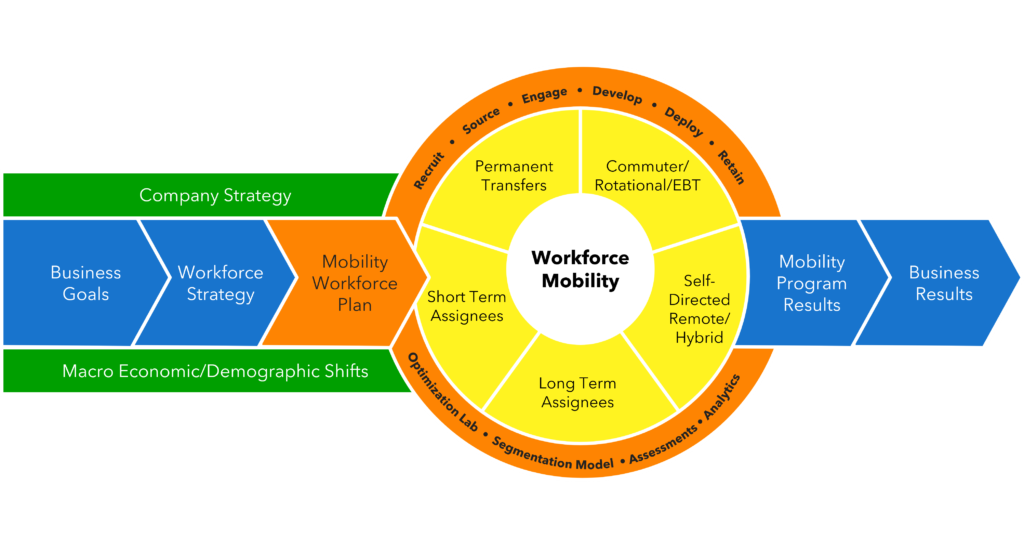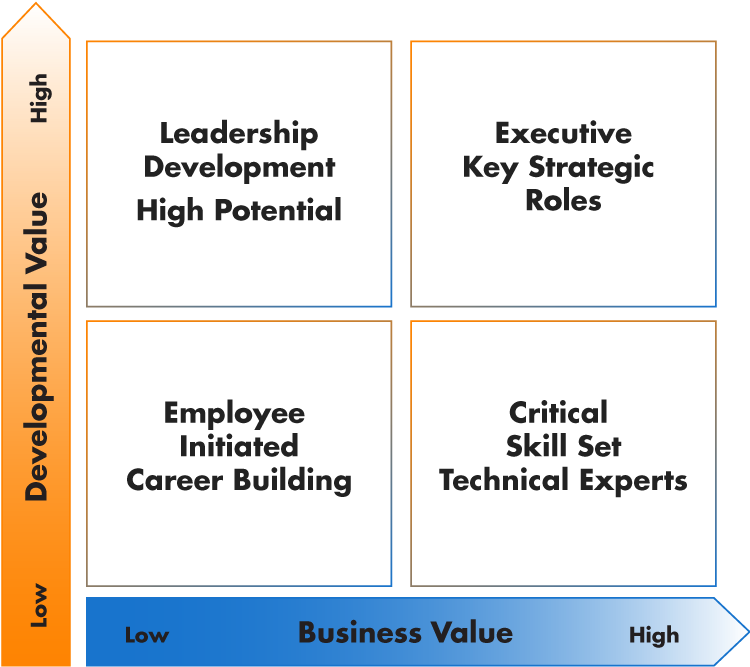
Just as the world was rebounding from the pandemic, Global Mobility leaders have had to quickly pivot from “full speed ahead” to “approach with caution” as soaring inflation, supply chain issues, the war in Ukraine, and recession fears threaten our sense of optimism.
But not all hope is lost. One of the more consistent themes we hear is that mobility has – finally – earned a ‘seat at the table’ as senior leadership grapples with these issues and their impact on the workforce. With global mobility influencing recruiting, retention and business growth – now, more than ever – mobility leaders have a unique vantage point and opportunity to contribute more meaningfully.
If you’re hoping to leverage this opportunity, here are a few proven strategies to consider:
- Align with talent management
- Embrace value-driven mobility and flexibility
- Support ESG initiatives
- Leverage better technology
- Decrease costs
Align with Talent Management
The talent shortage, great resignation and shifting priorities have forever changed the talent landscape. There is evidence the tide is turning, and employers are now in the driver’s seat, but aligning with talent management and the business is the first – critical – step.
Our Optimization model (below) is a tool designed to align Mobility with Talent Management and allows you to help leadership appreciate how mobility supports the business.
 This model illustrates the forces impacting the company and its strategy, including economic and demographic shifts, as well as competitive pressures moving the business. The ideal mobile workforce plan will use a wide variety of relocation and assignment types to acquire, engage, and retain talent and develop global leaders to advance the business plan. The outer ring of the model demonstrates how workforce mobility can support the entire talent management cycle and the tools that can be used to drive program and business results.
This model illustrates the forces impacting the company and its strategy, including economic and demographic shifts, as well as competitive pressures moving the business. The ideal mobile workforce plan will use a wide variety of relocation and assignment types to acquire, engage, and retain talent and develop global leaders to advance the business plan. The outer ring of the model demonstrates how workforce mobility can support the entire talent management cycle and the tools that can be used to drive program and business results.
Embrace Value-Driven Mobility and Flexibility
Long gone are the days of “one size policy fits all.” Many companies are segmenting their migratory population and aligning benefits to reflect the unique value each segment brings to the company. This is reflected in the Segmentation Model below. To accommodate many different move scenarios, each quadrant would be supported by a different level of benefits (and related costs). For instance, “hand-raisers” who volunteer to move may not warrant a full expat policy.

On the other end of the segmentation model, deploying key strategic roles that significantly impact the business may justify more comprehensive mobility benefits. Shifting to a model that reflects the criticality and value of the move will ensure the right cost/value balance.
This value-driven concept has accelerated the adoption of core/flex relocation policies. In fact, 62% of companies are considering adding more flexibility for the business in their mobility approaches, and 52% indicate they are thinking about increasing flexibility for the employee[1]. Almost all of our new policy development projects include a flexible component, now broadly empowered by better technology, like the user experience in Weichert Go.
Support ESG
Potential employees are increasingly likely to apply for and accept jobs from companies they view as environmentally sustainable. Still, they’re looking for more than just an “Ode to the Planet” featured on your corporate website. If you want to make work happen for your organization, you need your relocation policies to support DEI and ESG goals.
This may include adopting flexible options to empower people with disabilities to select the optional benefits that are most important to them – like packing, unpacking and setting up household goods. Or the option to use furniture allowances and donate and discard to reduce your carbon footprint.
By aligning your program with bold environmental and social governance, you can win the hearts and minds of key talent and demonstrate the value a sustainable relocation program can deliver to the organization.
Leverage Better Technology
The curious thing about technology is that if you’re not ahead, you’re already falling behind…and it’s no secret that the mobility industry has struggled to keep pace. Manual reporting and disjointed systems make it challenging to keep leadership informed and can’t provide insights that can help manage talent or the business.
According to AirInc’s Mobility Outlook Survey, 70% feel that technology would improve their ability to administer mobility more effectively. Prayers answered: With Weichert Go’s introduction, we’ve created powerful synergies between the multiple moving parts of relocation, dramatically improving the user experience.
As a single ecosystem that connects all stakeholders, it securely integrates our systems – while integrating seamlessly with our clients’ systems – to allow real-time updates throughout the mobility process. Go delivers groundbreaking tools, dynamic data visualization, and an intuitive user interface unlike anything in our industry. Schedule your test drive today to explore how dynamic new dashboards and reports can inform your next seat at the table discussion.
Decrease Costs
In the face of a looming recession, the C-suite will be acutely interested in cost savings. But, strategic GM leaders perfect the art of reframing the issue from a tactical discussion about costs (which have been enormously impacted by supply chain issues, rising fuel prices and the housing crisis) into a conversation about talent investments! Help the business understand what it will take for the company to win and retain key talent and build the leadership pipeline it needs to weather the uncertain headwinds.
Great things happen when mobility plays a more visible and strategic role, and leading organizations leverage this insight to make work happen. We hope some of these ideas inspire some change-making conversations. If you’d like to explore these and other strategies, let’s chat.
[1] AirInc Survey: Flexibility in Mobility – https://www.air-inc.com/library/flexibility-in-mobility/